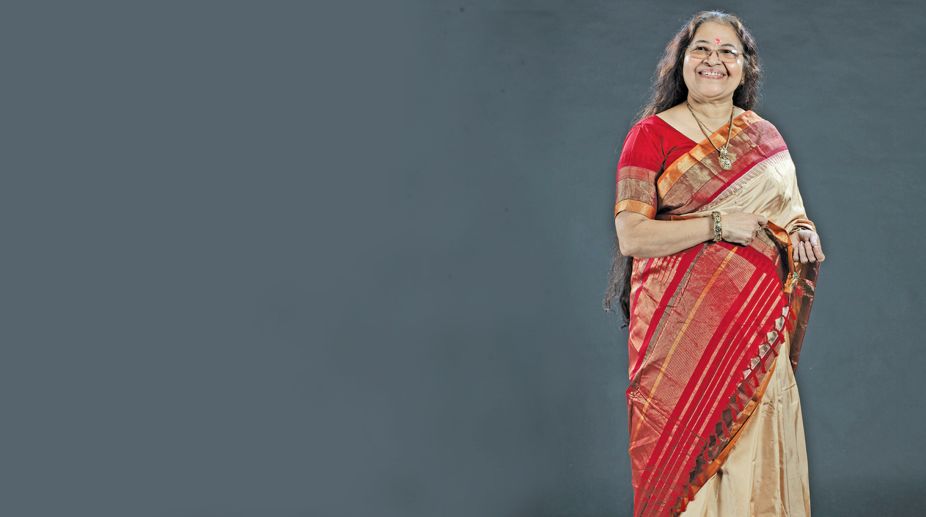District takes initiatives to uplift folk artists, preserve culture
The folk culture of Bengal is a vibrant tapestry of traditional art forms, rituals, music and dance.
Guru Thankamani Kutty’s seminal institution and its illustrious students gave connoisseurs much reason to cheer.

Guru Thankamani Kutty
The setting up of Kalamandalam Calcutta 50 years ago was indeed epoch-making. The stars shone bright for dance lovers when young Govindan Kutty landed in Calcutta, as it was known then, in 1955 and grew roots in the soil of his adopted home.
He was a young graduate in Kathakali from the famed institution, Kerala Kalamandalam, who soon married Thankamani who was also a graduate in Bharatanatyam and Mohiniattam from Kerala Kalamandalam.
Advertisement
Together they set up Kalamandalam Calcutta in 1968 and this year the institution celebrated its golden jubilee. From a humble beginning at Dover Lane, they are at present the possessors of a full-fledged building on the land given to them by the Government of West Bengal, which houses the Kalamandalam Performing Arts and Research Centre, the dream project of the Kuttys.
Advertisement
Though Guru Govindan Kutty left his mortal body in 2007, many a milestone have been reached since, prime among them being the naming of the park in front of Kalamandalam Performing Arts and Research centre, after Guru Govindan Kutty by the Government of West Bengal. Calcutta Kalamandalam has grown in leaps and bounds over the years with hundreds of aspirants thronging for admission.

Guru Thankamani Kutty has been turning out several dancers every year not only with basic training in the subjects she has learnt but is also imparting specialised teachings to equip them to take up dance as a profession. Many of her students have opened shop in the city as well as outside.
Her repertory members have been performing globally making the guru proud. In its golden jubilee year the performing troupe of Calcutta Kalamandalam had hardly a breather what with performances scheduled every second day.
The individual’s right to uphold creative quality in her works is unquestionably sacrosanct. Keeping that in mind if one has to judge the guru’s style of dance in the last five decades, one would notice a visible difference down the years.
Guru Thankamani Kutty has sensed accurately the pulse of the people in this state and has been able to cater to the much-needed dance activities of the region. Among past and the present students, Guru Thankamani Kutty has so many talented and accomplished disciples that I would be doing injustice by naming a few.
That said one has to mention her illustrious disciple, Lakshmi Swaminathan whose school in Bethesda, Maryland, US has created quite a ripple. She is an excellent teacher who has choreographed Pushpanjalis, Jatiswarams, Shabdams, Varnams, Keertanams, Padams and Thillanas as well as ensemble pieces.

Her troupe has performed for the mainstream community, which include libraries, National Cherry Blossom Festival, International Children’s Festival at Wolf Trap, Chinese New Year Festival and repeat shows for the Maryland Governor’s office on Asian-Pacific American Affairs.
On the other hand, at the third biennial programme of Nritya Dhyanam, Jayita Ghosh — a disciple of Guru Thankamani Kutty — presented an evening of dance in the Bharatanatyam form at Mohit Moitra Manch.
The unique characteristic of Nritya Dhyanam’s evening of dance was that everything was home grown, so to say. The special guests of the programme were assistant director of Kalamandalam Calcutta, Malavika Sen and its secretary, Somnath G Kutty.
The evening started on a happy note with Pushpanjali. Kruthi in praise of Devi — a Maharaja Swathi Thirunal composition — was choreographed by talented male dancer Pritam Das. In this piece he highlighted the compassionate nature of the Devi alongside her manifestation of a strong character capable of annihilating evil.
A dancer with potential, he has mastered the Bharatanatyam stances perfectly. On the other hand, Keertanam in praise of Krishna and in praise of Rama were translated into the Bharatanatyam vocabulary by Ghosh.

Anangodaya or rather the story of Ananga, who was burnt to ashes by Shiva, was an ambitious production, which could have been polished to perfection. Perhaps it would be so with subsequent productions.
The story, scripted by Shankar Rajarama with the music composition of Shankar Narayanswamy, vocalised by Kalamandalam Rajesh Menon with Mohana Iyer doing the nattuvangam, is a popular mythological tale of the naughty love god Manmatha, who tormented Parvati with love arrows and then at her behest, tormented Shiva whose wrath turned him into ashes.
Rati, Manmatha’s wife, begged Shiva to give her a boon to get back her husband. Her devotion melted Shiva who bestowed upon Rati a boon that made love in the world undying and eternal, thus giving Manmatha the blessing of love triumphing above everything.
Flautist Rupak Mukherjee, mridangam and konnakol player Shankar Narayanswamy along with violinist Natraj Radhakrishnan gave the piece a musical richness that could be tapped extensively. Morsing and kanjira were played by G Suryanarayanan.
Advertisement